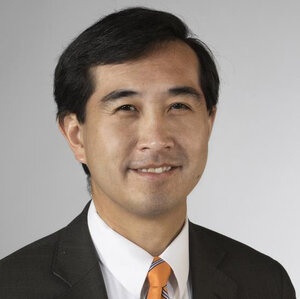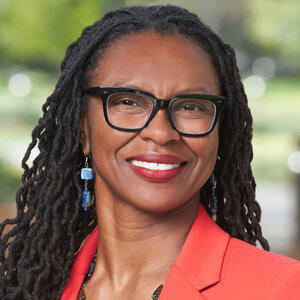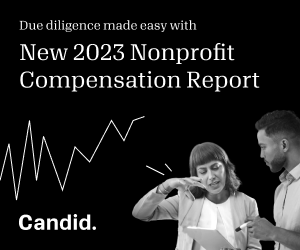The Supreme Court’s decision on affirmative action requires reimagining equity initiatives in education

In late June, the U.S. Supreme Court gutted more than 40 years of legal precedent by effectively ending affirmative action in Students for Fair Admission v. Harvard and Students for Fair Admission v. University of North Carolina. The court’s devastating ruling against Harvard College and the University of North Carolina galvanized civil rights organizations and the millions of Americans who supported affirmative action. In the wake of this decision, we all have a responsibility to ensure that the decision does not create further inequity for minority students at colleges and universities across the country.
Our just-released report, Affirmative Action in Higher Education: The racial justice landscape after the SFFA cases, is a joint effort by Asian Americans Advancing Justice – AAJC (Advancing Justice – AAJC), Legal Defense Fund (LDF), Lawyer’s Committee, American Civil Liberties Union (ACLU), LatinoJustice PRLDEF, and the Asian American Legal Defense and Education Fund to provide strategies for increasing diversity in higher education. Advancing Justice – AAJC has long fought to uphold affirmative action in higher education because affirmative action has paved the way for many qualified students of color, including Asian Americans, to gain access to our nation’s colleges and universities. This includes low-income students, English language learners, and other Asian Americans who cannot be encapsulated in the “model minority” stereotype. And while we have always known that affirmative action is not a panacea, the decision has accelerated the civil rights community’s efforts to write the next chapter for diversity, equity, and inclusion in higher education.
Developing a strategy for “what’s next” helped our organizations focus on solutions at and beyond the college level, establishing equitable opportunities from kindergarten through high school. The report offers concrete solutions to college students, education professionals, individuals, and institutions looking to further their commitment to pursuing racial equity. And it suggests ways to bring fair and robust educational opportunities to all students. We hope to encourage institutions to admit individuals from varied backgrounds, creating a diverse campus that reflects the extensive resources and potential of our multiracial democracy.
The report includes these major recommendations:
1. Diligently comply with anti-discrimination laws: Schools should take proactive measures to ensure that their policies and practices comply with federal and state antidiscrimination laws, which prohibit funding recipients from intentionally or unintentionally limiting opportunities for people based on race or ethnicity.
2. Reimagine and retool admissions policies in higher education: Schools should engage in holistic admissions processes that evaluate applicants’ demonstrated capacity and strength, considering resources and opportunities available to them in their K-12 community. Schools should also critically examine admissions requirements, policies, and procedures to ensure that they do not create inequitable and unnecessary barriers to access.
3. Expand recruitment efforts and build robust pipelines: Schools should develop innovative strategies to target recruitment efforts to underserved communities. This includes tailored programming for students who cannot visit campuses, development of robust pipelines for students of all ages, and investment in and compensation for historically underrepresented students and alumni who serve as ambassadors for the institution in their communities.
4. Support historically marginalized and underrepresented students on campus: A healthy, vibrant campus climate for all students is critical for ensuring equity in higher education.
Does the court ruling affect diversity, equity, inclusion, and accessibility (DEIA) beyond education?
The court’s decision addressed only the practice of affirmative action in higher education. It was limited to the consideration of race in college admissions as conducted by Harvard and UNC for the pursuit of the educational benefits of diversity. The decision does not alter the standards for compliance with federal civil rights in other areas, such as employment, lending, housing, and contracting, which are covered by different federal statutes and distinct bodies of law.
Importantly, the decision does not alter the lawfulness of DEIA measures. As U.S. Equal Employment Opportunity Commission chair Charlotte A. Burrows confirmed, “the decision in [SFFA]…does not address employer efforts to foster diverse and inclusive workforces to engage the talents of all qualified workers, regardless of their background….It remains lawful…to ensure that workers of all backgrounds are afforded equal opportunity in the workplace.”
To be clear, efforts are under way to expand the scope of this decision, and Advancing Justice-AAJC will oppose these misguided and harmful efforts. And we call upon conscientious institutions, be they governmental, corporations, or nonprofits, to stand firm against these machinations and redouble their efforts to foster and create a multiracial and equitable environment for workers and our society. As we work to ensure a safe and inclusive America for all, we will all need to come together to combat those that seek to divide us.
This is where philanthropic organizations can lean in. We not only need resources in this fight, but philanthropic organizations also need to practice internally the values that can support and promote an inclusive multiracial America that works for everyone. The philanthropic community will need to remain strong and resolute even in the face of attacks by those who oppose civil rights and equitable opportunities for the most marginalized. The community cannot overreact to the decision and be scared into inaction or regression.
Toward that end, philanthropy must support those organizations and institutions that are on the front lines. Those in opposition to diversity programs and civil rights issues are extremely well funded and it will take sustained investment to ensure that their backward facing vision for America does not take hold. The purpose of philanthropy is to equalize the playing field to ensure that resources are given to communities that are marginalized, excluded, and under-resourced. As we continue our efforts to reverse the damage and find sustained long-term solutions for civil rights issues like fostering educational equity, we will need everyone in the philanthropic community to prioritize and commit to sustained investment in organizations that are seeking to advance a forward vision toward a vibrant multiracial democracy, where all communities thrive together.
In Conclusion
We know that the majority of Americans, including the majority of Asian Americans, support affirmative action and do not want to see inequality grow in education or other sectors. Implementing the recommendations outlined in the report is a first step towards achieving that goal. Moreover, the Supreme Court’s affirmative action ruling was not the end of the push for multiracial diversity. It is the beginning of the next chapter of our fight for equity in all levels of education. We must protect one of our most important institutions—schools—and ensure that they continue to foster multiracial diversity. It is only when we eliminate structural barriers to racial equality that we will begin to realize the promise of the American dream.
John C. Yang is president and executive director of Asian Americans Advancing Justice – AAJC.








Worried about our democracy? Invest in Latinx nonprofits.